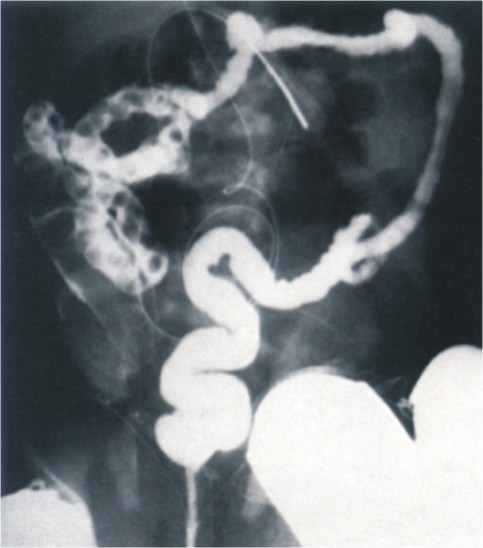The next step in the
diagnostic and management process is visualization of the large intestine.
This is done using hygroscopic material that will in addition to
showing the large intestine liquefy the meconium in the distal ileum and
thus treat the problem without an operation.
In previous years, Gastrographin was used. This high osmolar contrast
solution has been replaced by isosmolar water-soluble contrast agents, which
do not produce the severe fluid electrolyte imbalance seen following
Gastrographin.
Therapy with
Gastrographin Enemas was first described by Dr. Helen Noblett, an Australian
Pediatric Surgeon in 1969.
In
excess of 62% of patients with meconium ileus can be successfully treated
with an enema.
Press in the block frame to see the arrow
